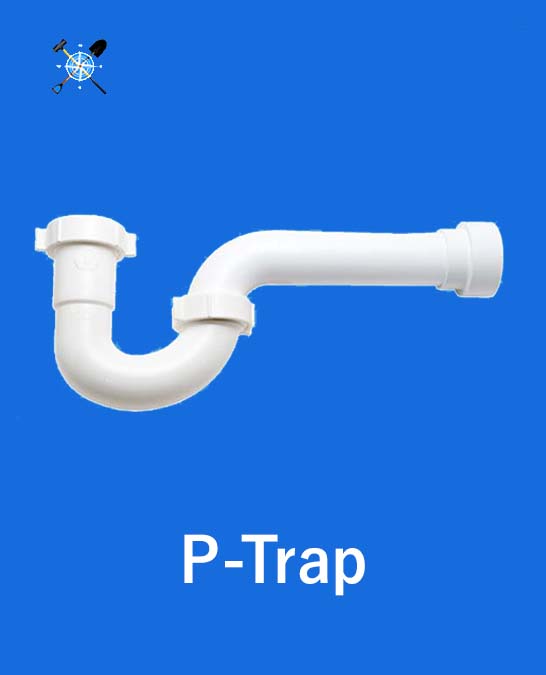As a Civil Engineer, one’s knowledge of plumbing should not be limited to textbooks or left to the plumber. It is essential for the civil engineer to know the right type of trap used for the specific water fixture. So here in this article, comparisons of the S-trap and P-trap are made for your interest.
What is S-Trap?
S-trap looks like the letter “S” which is why the name S-trap is given. The trap is intended to outlet the wastewater from the wash basin, bathtub and kitchen sink keeping the unwanted foul smells out. This is achieved by containing water in the “S” shape of the trap. This water acts as a barrier from entering toxic gases into the outer environment (house) and inner environment (pipe network).

What is P-Trap?
Unlike the S-trap, the P-trap also looks like the letter “P” or it is a “U” shape pipe connected to the pipeline. The functionality of the P-trap is the same as that of the S-trap. The advantage of such a trap is that it has no tendency to siphon out the water. It does not even mean that the retention of water in the trap is prolonged, but the water can dry out if the trap is not used for a more extended period.

Difference Between S-Trap and P-Trap
The comparison made between these two traps is on the basics of technical application and functionality. Although they have the same functionality, they also have some differences which we will see under a subheading.
1. Structure
The S-trap is named for its resemblance to the letter “S” laid horizontally. One end is connected to a fixture such as a sink, tub, or WC pan, while the other end connects to the drain pipe. Its curved shape retains a small amount of water, which acts as a seal to prevent sewer gases from entering the home.
In contrast, the P-trap has a shape similar to the letter “P” or a “U” when viewed from the side. Like the S-trap, one end connects to the sink, tub, or WC pan, and the other to the drainage system. The curved portion of the trap retains water, forming a barrier against odours from the drain line.

2. Functionality
Both traps serve the same fundamental purpose, which is to connect a water fixture such as a sink or tub to the drain pipe while maintaining a water seal that blocks the entry of noxious gases. However, the P-trap is increasingly preferred because it provides a more reliable barrier. In the case of an S-trap, the water seal can be siphoned out when a large volume of water passes through, creating an air gap that allows foul odours to escape. On the other hand, the P-trap is designed to retain water even during heavy usage, preventing the formation of an air gap and ensuring better protection against sewer gas.
3. Placement
This is the subject of agreement as some may use one type of trap in all kinds of connections or interchange the connection and trap. However, through the studies and lifelong user experience, it was found that P-traps are better when connected to intensive use of water is present. Such an example is the sink in the restaurant’s kitchen, hospital, and college cafeteria. However, they are also installed in the water closet and bathtub of a residential building, replacing the S-trap. S-trap also comes with a built-in water closet in the toilet.
Share Your Thoughts
Which type of trap is commonly used in your country? Share your thoughts with us in the comments section below!
Also, read: Types of Traps: Functions And Used In Plumbing
FAQs:
Q: What is S-Trap?
Answer: The S-trap is so called because of its shape, which looks like the letter “S” and is connected to a pipeline to prevent the rise of sewer gases into the sink or other water fixtures.
Q: What is P-Trap?
Answer: P-trap also looks like the letter “P” or it is a “U” shape pipe which is connected to a pipeline and contains a water barrier which prevents the rise of fuel and harmful smells in the house. These foul and harmful gases are sewer gases.
Q: Why is P-Trap preferred over S-Trap?
Answer: These days, the P-trap is preferred over the S-trap because the only advantage is that the P-trap can hold the water barriers much longer than the S-trap.
![]()







